May Magnanimity: Week 4
By Mento 0 Comments
May has a lot of days in it, turns out, and so I've been filling it with as many playthroughs of smallish (1-4 hour) Itch.io Indie games as I can manage. This is all in service of honoring the huge charity bundles Itch.io and its power users started curating around this time three years ago, though really it's an excuse to cut some of my Itch.io backlog down to something could be laughably described as manageable. I didn't even have any Itch.io games this time three years ago, and now the site claims I have almost 250 of them; the easy solution would be to ignore it like I do most of my Epic/Steam/GOG libraries, but anyone who volunteers their creative endeavors for the sake of raising cash for good causes deserves at the very least a shout-out. Albeit the kind of shout-out that might also include a heap of (hopefully constructive) criticism.
As always, links to previous weeks and the games covered therein can be found at the bottom of this and all the May Magnanimity entries. May's just about over now, but I'm going to give myself a little victory lap with the three days that remain and come back for one last half-update on the 31st with whatever I'm able to squeeze in. May's not over until it's over, as we've never said around here.
MM17: Vignettes

- Developer: Skeleton Business
- Year: 2017
- Status: Complete
This was cute. Vignettes reminds me of a little game called GNOG I played a while back, in that it belongs to a very visceral type of puzzle game; visceral in the sense that you're figuring things out by experimenting with objects that you can move around and play with. Like a Rubik's Cube that you'd need to hold in your hand and fiddle with to make any leeway with it, or as close to that sensation as a non-VR game will allow. The goal of Vignettes is to fill a series of paintings each with a collection of random knick-knacks: the way you do this is by taking an object, moving it around in such a way that the angle you're looking at it from makes it appear like something else, and through this perspective trickery you find yourself holding a new item connected to other gateways and secrets to uncover. Progression is as simple as choosing an object from a chest—this chest fills up with more "starting point" items as you complete portraits and earn the keys attached to them—and then using a helpful flowchart to track the objects you've yet to discover. A single object might transform into three or four others depending on the way you look at it.
However, this object discovery process only represents the first layer of the game. There's a page you can visit that shows you a selection of images that include objects you may or may not have already seen. The objects look different in these images and it's your task, optionally anyway, to figure out how to get them into that state. One example would be a little concert hall inside a shell with an orchestra playing: when you find this shell, it's devoid of its main act and by interacting with other objects in the same series (that is to say, all part of the same portrait) you'll free musicians who'll dutifully float off to the concert hall to prepare. Other challenges might involve opening up a locket box by finding a key elsewhere, playing a tune on a trumpet, filling a photo album, and so on. Apparently, completing all these special challenges provides you with a secret website address to check out except it was unfortunately already dead for me; even so, the way you'd have to bounce between several objects to figure out these solutions made for a more engrossing time than simply seeking the objects themselves. The simple visual style and equally simple mechanics would make this a suitable game for little ones, but it also has enough depth to how its perspective puzzles work that I'd recommend it for anyone, especially if they've previously enjoyed chill visual puzzle diorama type of games like GNOG, Windosill, or anything from Amanita Design.

MM18: Clash Force

- Developer: Spicy Gyro Games
- Year: 2017
- Status: Complete
I poked my head into Clash Force back when I was doing my 2017-focused feature Dredge of Seventeen but never got around to finishing it. Turns out it was a pretty short game, so I guess I just got stuck on a tough level. Clash Force is an homage to "Nintendo difficult" NES "run-and-gun" platformers such as Contra and Mega Man, letting you pick from one of three mascot characters that would've fit into any early '90s radical anthropomorph superhero cartoon as they take the fight to the evil robotics genius Crackman and his legion of mechanical minions. It lets you know exactly what type of experience it's aiming for with a difficulty screen offering three options, Normal being the easiest. To reduce the high challenge level there's no lives and you respawn endlessly from the start of the current level, but that's not to say you're in for an easy time: there's a few boss fights in particular that were real swine, and they weren't made any easier by the fact that you always respawn with the base peashooter.
To expand on that, the game follows Contra by offering you several power-ups that change the type of firepower you can project. These include lasers with higher offensive capability and a spreadshot that offers greater coverage. You can also acquire shields which will absorb one hit: if you get hurt without one, you'll lose one of your three hearts (these can be replenished with power-ups too) and lose whichever upgrade you had. As with most shooters with power-ups, you'll have an easier time of things as long as you don't get hit but a single mistake will quickly snowball into a series of them as you lose the benefit of a powerful weapon that can take down enemies quickly before they can retaliate. Worlds are split up into three stages followed by a boss, and there's a small bonus area between each stage that lets you take one power-up with you (though it can be tough to grab the one you want). The game really gets punishing towards the end, especially with the Sonic 2-inspired last world where you have to ride on missiles to get into the boss's flying headquarters. One trouble with the difficulty is that it can frequently feel a bit unfair due to how enemies will spawn almost on top of you depending on where you are on the screen; the high-speed missile sequence is full of those, requiring some shoot 'em up style memorization of the hazards to eventually pass. That said, the infinite respawning and the overall brief length mitigate much of what would otherwise make this game a frustrating and difficult ordeal and it actually felt pretty good to finally beat one of these types of run-and-gun games. Contra and I do not get along, generally speaking.
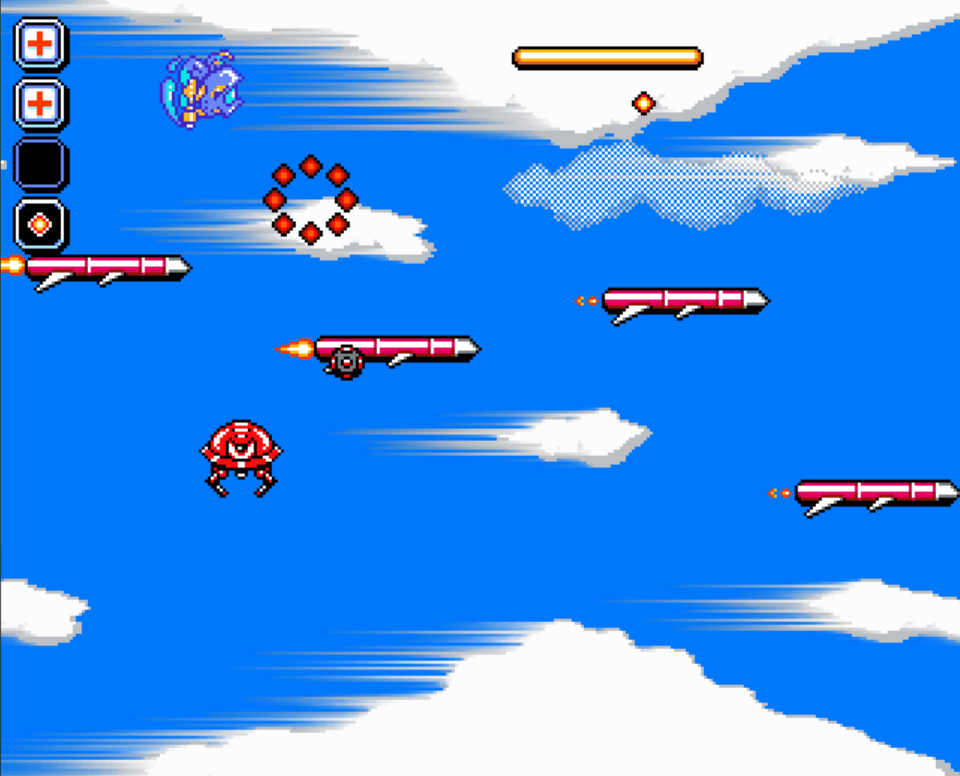
MM19: Fatum Betula

- Developer: Bryce Bucher
- Year: 2020
- Status: Complete (sorta)
The Indie horror scene has really become attached to PS1 aesthetics of late. I'd guess in part because several of the biggest survival horror franchises—including Resident Evil and Silent Hill—got their start on Sony's original console, but I also suspect there's something about the surreal obliqueness of those blocky early polygonal models that made imaginations run wild, tapping into our collective fear of the unknown. Fatum Betula isn't a survival horror per se but it's certainly drinking from the same well as those many recent PS1 horror homages with its initially intimidatingly obtuse direction and disquieting visuals. Waking up in a church of sorts, the player finds a tree floating over a pool and a letter in their inventory inviting them to seek a "face in the wind". Hesitate in front of the pool long enough and sure enough a creature emerges from the air, assigning you a task: the sapling you see, the birch of fate (a literal translation of the game's Latin title), is linked to the world state. By changing the type of liquid it rests in, you can change the entire world around it. The goal, then, is to find an alternative liquid source to the stagnant water that sits there now.
The game world is an assembly of zones that may have NPCs, items, and other exits to visit, some of which are more obvious than others. Following any typical adventure game chain of these items and NPC interactions will eventually result in a type of liquid you can use to change the world, with those liquids that are harder to get resulting in more interesting transformations. An easy one would be to kill a poor catperson who is starving to death: they want a fish, but there's one orange-colored fish that is packed with enough poison to kill an immortal. Taking the catperson's blood is a viable option for an ending, though it transforms the world into one of survival of the fittest where no communities or civilizations can form due to the violence in peoples' hearts. Another option I found was to brew a potion of immortality, which in turn can make it so every living thing continues to live forever, eventually floating off into space without memories or sanity after the heat death of the universe. Fatum Betula has a handful of these philosophical conclusions to the game, and extends its longevity by tasking you with finding all of them. Unfortunately, there's no tracker for these endings nor any way to know how many are yet to be found (at least as far as I've been able to tell; maybe it's there's some very subtle markings on the title screen or something) and since most of the routes require the same chain of items and NPCs, you're often required to repeat a good portion of the game over and over to reach the branches that matter. There's a run button to make it easier to get around, but it still involves a huge amount of walking across the same areas and solving puzzles you've solved several times over, so I'll admit to only having enough patience to earn a few of the endings. The ending with the highest number attached to it that I found was that immortality one, considered the seventh, but whether there's an eighth or ninth beyond that I can't say without spoiling myself. Even so, I was pretty much set after three or four. Definitely an interesting spin on a 3D adventure game with plenty of trippy lo-poly visuals to create an unnerving environment, but it's hard to maintain an uneasy atmosphere built on the unexpected and unknown when you're repeating so much of the game again and again.
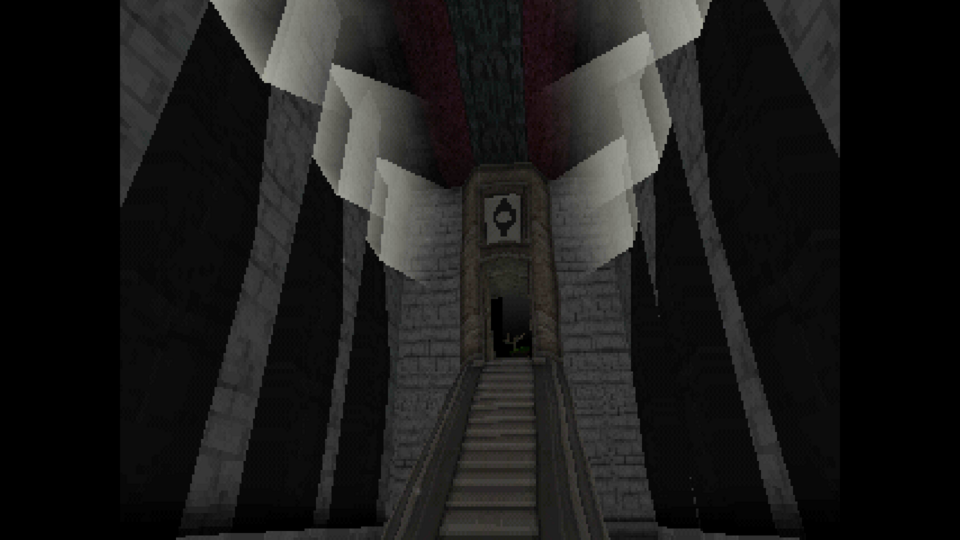
MM20: Dumpy and Bumpy

- Developer: Programancer
- Year: 2021
- Status: Abandoned
When a man reaches sexual maturity, there's a question he must ask himself: Do I prefer the dumpies or the bumpies? Well, thankfully here comes a game that caters to both preferences. Actually, I'm just being crude because it's better than being rude: For as much as I appreciate what Dumpy and Bumpy is doing here—hearkening back to a specific type of top-down action-puzzle game that was big on NES with games like Sokoban, Kickle Cubicle, or Adventures of Lolo—there's a certain trick they missed from those older games, and as Dumpy and Bumpy's challenge level increases it's proving more and more to be a fundamental weakness. A fatal one, perhaps. The NES had a limited amount of space on the screen to work with so character movement had a certain discreteness to it, for lack of a better term: characters and other animated parts moved in well-defined chunks. When you translate that to a game where there's a hundred pixels in a single "block" of the game map, issues arise with regards to precise movements and sprite collision and the player's perception of same. It's a hard thing to put into words, but it makes a huge difference to a game's feel when playing: an elusive quality for a designer to get right as much as it is for a reviewer to explicate in just a handful of paragraphs. As such, it's a little too easy to feel cheated by Dumpy and Bumpy when you fail something or are defeated by being off by a pixel, which happens all too frequently. Similar games have figured out this little trick in the past—Toki Tori 2, an excellent 2D puzzle-explormer from way back, is such an example of a game that had these discrete movement "blocks" to make intricate plans of the "pushing this block here while moving over there" type far easier to execute on despite otherwise having a modern resolution size.
With Dumpy and Bumpy you're hitting a wall of annoyance almost from the get go, especially as the game has you chasing a "par time" for each stage for the best result. Granted, the feel of a tough puzzle game like this a real hard balancing act that those developers from thirty years ago made look way easier than it actually was, but that's not to say Dumpy and Bumpy doesn't make some obvious errors too: for instance, going back to that par time thing, actually making the par time won't count as the game wants you to beat it; a minor "eff you" to the player that is entirely unnecessary since they could just decrease all the par times by a single second and let players be happy they "just made it" by hitting it on the dot. The game has its strengths too: the visuals, which are both delightful and have that clean look so important to the puzzle genre where there needs to be no ambiguity with how everything operates and interacts with each other, and the variety of objectives present that includes standard Sokoban block-pushing, quickly dashing around mazes, setting up a string of traps to complete a level in one attack, or those floor puzzles where you have to create an unbroken chain by walking over every tile. There's no questioning whether or not Progamancer has a firm grasp of this long-dormant game format and what makes it tick, it's simply a matter of execution.
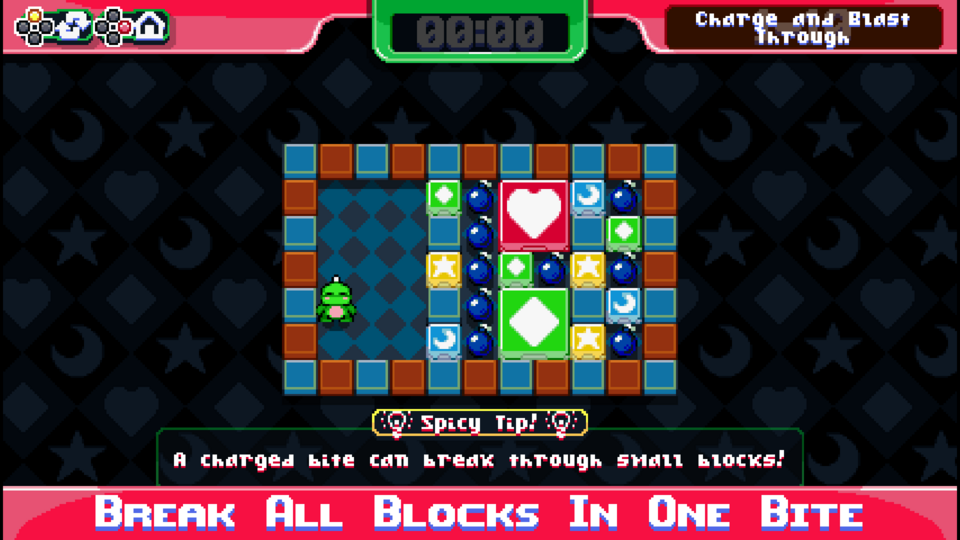
MM21: Amelie
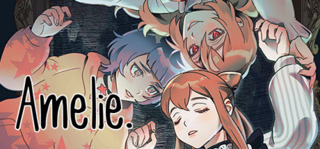
- Developer: Two and a Half Studios
- Year: 2021
- Status: Complete
Well, here's the requisite yuri visual novel. I'm not sure why I decided this would become a running thing, but at least so far we've had three very different stories even if Amelie belongs to the same supernatural horror sphere as last week's Pale Cachexia. While that game slowly built up the tension and interpersonal drama, this one's more like a short, sharp shock with a twist akin to an episode of a horror anthology show like The Twilight Zone or The Outer Limits (it was written for a Game Jam, so it's far from some multiple-hours-long VN that has time to slowly develop). The eponymous Amelie is a young woman from a rich family who has been trapped inside her mansion due to the pandemic—I guess that was a hot topic in 2021, or at the very least viral—but is eagerly anticipating the arrival of her first guest in many years, her penpal Sofia. Amelie's only had her friend Lilika for company, her parents and the mansion's staff having travelled elsewhere when the outbreak happened, and wants to hear more of what's been going on in the outside world. Sofia and Amelie spend some time together, retire for the evening, and then... stuff happens. Spooky stuff, mostly, but maybe a little bit of gay stuff too.
Amelie (the game) is broken up into three routes that play out simultaneously, each following a separate character. Amelie's route, the first, is unchanging in its progression and has Sofia mysteriously disappear the following morning, leaving Amelie devastated that her friend would suddenly depart without a word. Sofia's route, the second, then goes deeper into some odd turns of phrase that might've set off warning bells when you heard them in the Amelie route, such as how Amelie is surprised that Sofia attends university or has taps installed in her home, and can conclude in two different ways based on how "foolish horror movie protagonist" you feel like being with her choices. Lilika's route, the last, then lifts the curtain on what's actually going on (ghosts, y'all) and offers three conclusions. The Rashomon-like format presents a neat bait-and-switch device, while still a mostly linear affair, by using the routes to first lay down the groundwork, ratchet up the mystery, and finally knock down all the dominos. Visually the backgrounds are a little drab, with heavy use of image filters, but the character designs for the three women have this ethereal quality and are given distinct fashion senses that ties into something about their character and their role in the story: Amelie's is cute, graceful, but old-fashioned; Sofia's is contemporary but prioritizes comfort over glamor; and Lilika's is subdued and monochrome but for the long red string she uses as a ribbon. Know going in that it's going to be a bite-sized thing without a whole lot dedicated to colorful prose and character development, and you should be able to enjoy its few spooky twists and turns. (One complaint I have, though, is that it doesn't appear to be on DVD, nor do you cook an egg with a spoon.)
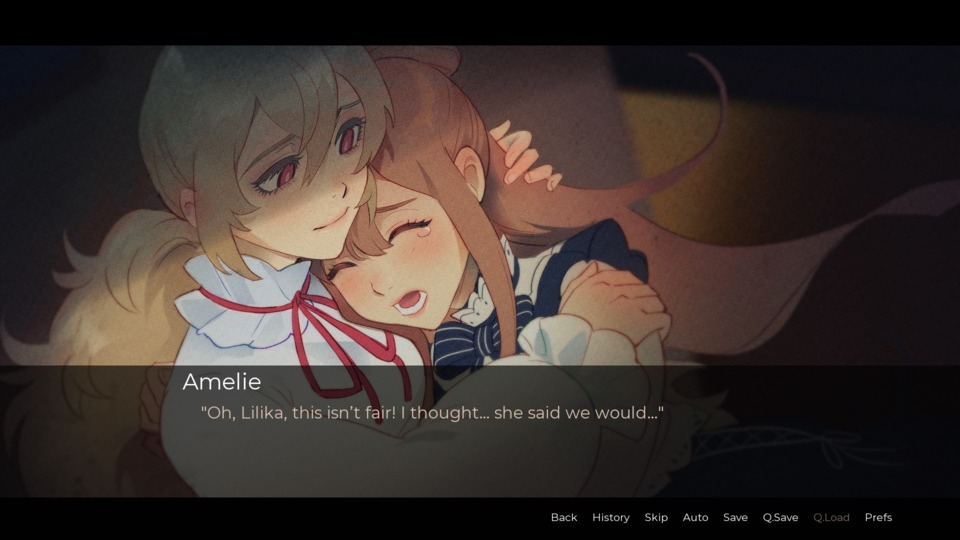
MM22: Oh Jeez, Oh No, My Rabbits Are Gone

- Developer: Studio Nevermore
- Year: 2019
- Status: Complete
Finishing off this week with what proved to be a deeper explormer than I expected from its goofy title. A young woman living alone in the mountains adores her pet bunnies—all one hundred of them—but something causes them to get spooked by something in the middle of the night and, due to a moment of carelessness, they all escape through an open gate into the wilderness. The mountain is not a safe place to be at night—many shadowy monsters take to the pass when the sun is down—so the protagonist must quickly find and rescue all of her rabbits before the stars come out. The game doesn't so much truck in the usual upgrade-based progression as it does present a large map (four, to be precise) and has you explore as much of it as you want to hunt down the missing rabbits. It's not strictly necessary to complete the game with all of them but there's a special reward if you do. As well as the hundred titular lagomorphs there's also a set of palette collectibles that'll change the protagonist's color scheme, as well as several LGBTQ+ pride-related palettes already unlocked (each uses the associated flag colors). The palettes are a little tougher to reach, but the game mercifully tracks them along with the rabbits for each area.
With the rabbits, the goal is to escort them to a nearby tree stump that warps them back to your homestead. This is done through a combination of environmental puzzles and the protagonist's voice, which can be used to gain a rabbit's attention and then command them to stop and move. Some rabbits have special abilities that you can exploit—a flying rabbit doesn't have to worry about getting over wide gaps, for instance—and some rabbits are well-trained, which gives you a bonus set of commands to work with (a longer jump, a confidence boost that'll let them avoid enemies, etc.). The bulk of the gameplay is contained within these little escort puzzles (if you're trying to rescue them all, anyway) though there's still an ample amount of platforming too. The protagonist is not a high-leaping video game superheroine, so all she can manage is a moderately wide horizontal hop or vaulting up any block directly adjacent within a certain height threshold: the world is designed with these limitations in mind, often requiring you to think about the path you might need to take. Holding the sprint button makes the jumps a little wider, at least, giving you a few options. I'd definitely liken Oh Jeez, Oh No, My Rabbits Are Gone to some other mostly pacifistic puzzle-explormers like the aforementioned Toki Tori 2, Full Bore, or Knytt Underground. It's also probably my favorite of these May Magnanimity mini-Indies I've played so far this month, except it probably doesn't even count as "mini" since it took some five or six hours to find everything. Definitely a pleasant surprise and another lesson to not judge a game by its title (something I'll keep in mind with the upcoming Towers of Aghasba).
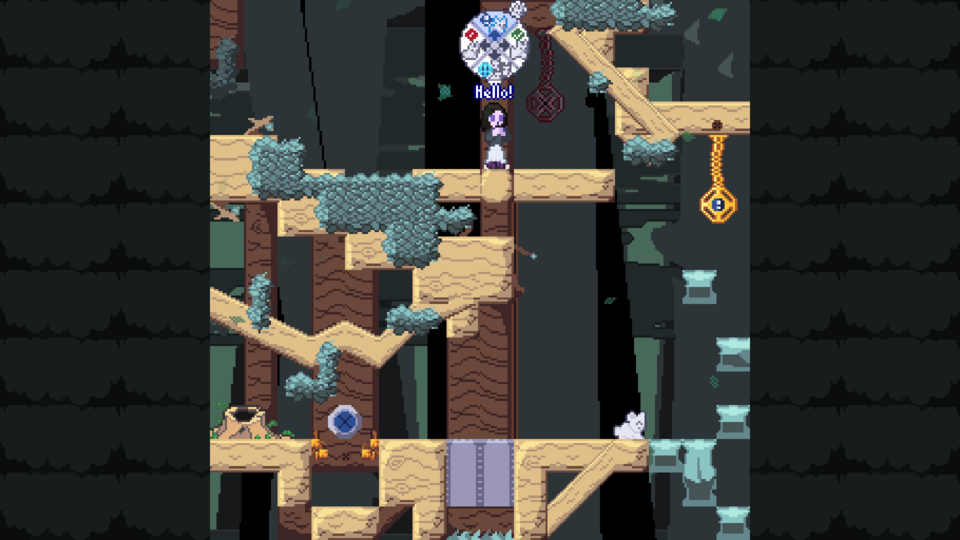
| Week 1 | And All Would Cry Beware!, Fossil Hunters, Marie's Room, Once Upon a Crime in the West, This Strange Realm of Mine, Miasma Caves |
| Week 2 | Summer Gems, The Adventures of Wolf and Hood, Ynglet, The World Begins With You, MiniNatura, Ecchi Sketch |
| Week 3 | Curse of the Crescent Isle DX, Pale Cachexia, Jetscout: Mystery of the Valunians, Rising Dusk |
| Week 4 | Vignettes, Clash Force, Fatum Betula, Dumpy and Bumpy, Amelie, Oh Jeez Oh No My Rabbits Are Gone |
| Bonus | Sector 781, The Black Iris, Gunmetal Arcadia Zero, Hatch, The Light at the End of the Ocean |
